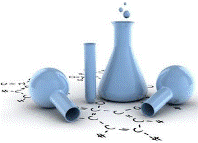Chemical and Biomolecular Engineering, Department of

Department of Chemical and Biomolecular Engineering: Faculty Publications
Date of this Version
2010
Document Type
Article
Citation
Comput Biol Chem. 2010 April ; 34(2): 86–96.
Abstract
The model herein aims to explore the dynamics of the spread of tuberculosis (TB) in an informal settlement or township. The population is divided into households of various sizes and also based on commuting status. The model dynamics distinguishes between three distinct social patterns: the exposure of commuters during travel, random diurnal interaction and familial exposure at night. Following the general SLIR models, the population is further segmented into susceptible (S), exposed/latently infected (L), active/infectious (I), and recovered (R) individuals. During the daytime, commuters travel on public transport, while non-commuters randomly interact in the community to mimic chance encounters with infectious persons. At night, each family interacts and sleeps together in the home. The risk of exposure to TB is based on the proximity, duration, and frequency of encounters with infectious persons. The model is applied to a hypothetical population to explore the effects of different intervention strategies including vaccination, wearing of masks or scarves during the commute, prophylactic treatment of latent infections and more effective case-finding and treatment. The most important findings of the model are: (1) members of larger families are responsible for more disease transmissions than those from smaller families, (2) daily commutes on public transport provide ideal conditions for transmission of the disease, (3) improved diagnosis and treatment has the greatest impact on the spread of the disease, and (4) detecting TB at the first clinic visit, when patients are still smear negative, is key.


Comments
Copyright 2010 Pienaar et al.